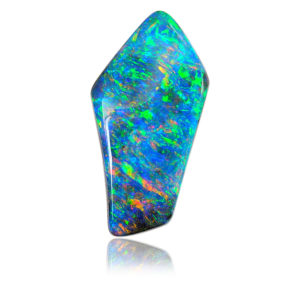Australian National University
Tuesday, 13 November 2007
The sale of opals contributes $500 million to the Australian economy each year, yet up until now, finding the buried treasures has largely been a question of luck and perseverance for miners.
A new technique capitalises on natural radiation emitted by the opals to dramatically improve the detection process.
Two scientists have spent nearly 20 years developing a way to ‘see’ underground areas of high opal concentration in a method that does away with the need for blind drilling.
“Australia is home to the largest and most widespread deposits of precious opal and accounts for 95 per cent of the world’s production,” Professor Lewis Chadderton from The Australian National University said.
“Opal deposits are found within deeply weathered sedimentary rocks in the Great Artesian Basin that occupies almost one fifth of the continent’s centre and east. Geologists agree that there are vast areas within the Basin where opal is likely to occur, but until now there was no means of detecting this mineral other than by direct recovery of opal fragments during exploratory drilling. Opal sites tend to be discrete and sporadic, so even drilling within a rich deposit can be fruitless unless there is a direct hit.”
Dr Brian Senior, formerly a geologist with the Bureau of Mineral Resources (now Geoscience Australia), discovered in 1990 that opals exhibit higher than background levels of radioactivity.
He and Professor Chadderton went on to discover that this radioactivity was the result of an unusual combination of uranium, thorium and their decay products trapped inside the structure of the opals when they formed approximately 20 million years ago.
This radioactive ‘glow’ means that opals can be detected with a much higher degree of accuracy than was the case with traditional exploratory drilling.


